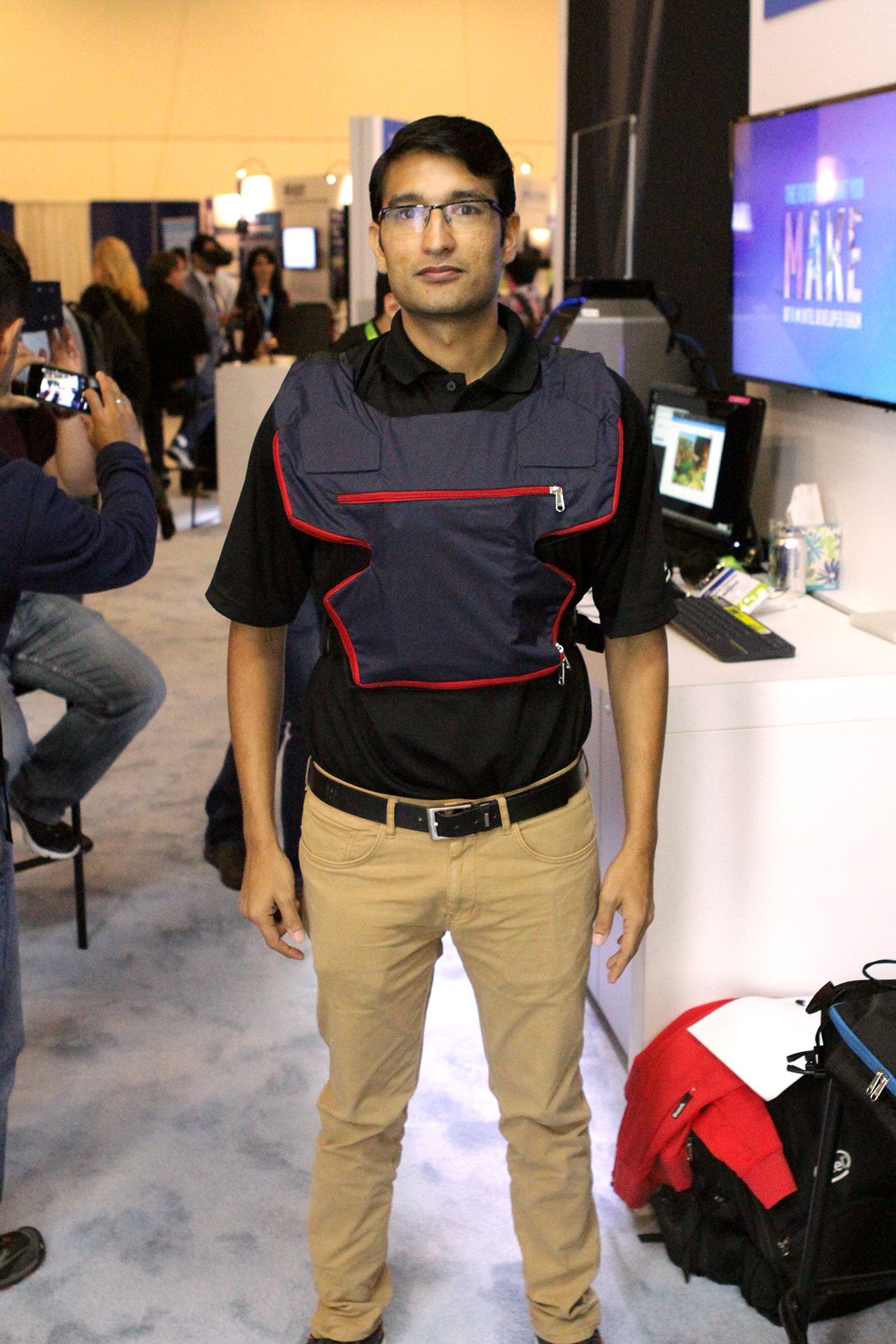Like VR Backpacks? Try Intel’s VR Vest
We saw several VR backpacks--that is, PCs packed into a knapsack and powering a VR HMD--at Computex 2016, and they were in various stages of completion, but at IDF 2016 we found a VR vest.
Yes, a VR vest--an unnamed proof of concept--made by a group within Intel.
Ergonomics
If you think about it, a VR vest arguably makes more sense than a VR backpack. A vest ideally has a more balanced design, hanging equally over your front and back instead of tugging backwards on your shoulders, and the two demonstrators on the IDF show floor, Rohit and Atsuo, told me was that was indeed the goal with this particular vest. They specifically tried to balance the components of the system evenly on the front and back, which wasn’t terribly difficult because the whole shebang weighs only about five pounds.
Further, the team seems to have thought through the cooling issues. The vest houses an entire PC, and as we’ve discussed in regard to VR backpacks, there are obvious heat issues that can arise. But Intel’s vest has fans--possibly three. The I/O ports are at the top of the vest, facing up to the ceiling, and there’s an adjacent intake fan. The vest expels hot air out either side of the vest, through metal mesh vents.
I was told that the system would never raise the wearer’s skin temperature beyond 35 degrees C (95 degrees F).
What’s In The Vest
Although specifics are vague at this point (again, this is a proof of concept, so that’s to be expected), we know a few details about the VR system-in-a-vest.
It’s essentially a miniaturized NUC, but it has some customizations, including a unique motherboard. The system’s heart is a quad-core Intel Core i7-6785R (Skylake) CPU, and it has 8 GB of LPDDR3-2166 Hz RAM. The version we saw has a 64 GB (SATA 6 Gbps) SSD, but it can accommodate up to a 512 GB SSD and may eventually support PCIe SSDs.
Get Tom's Hardware's best news and in-depth reviews, straight to your inbox.
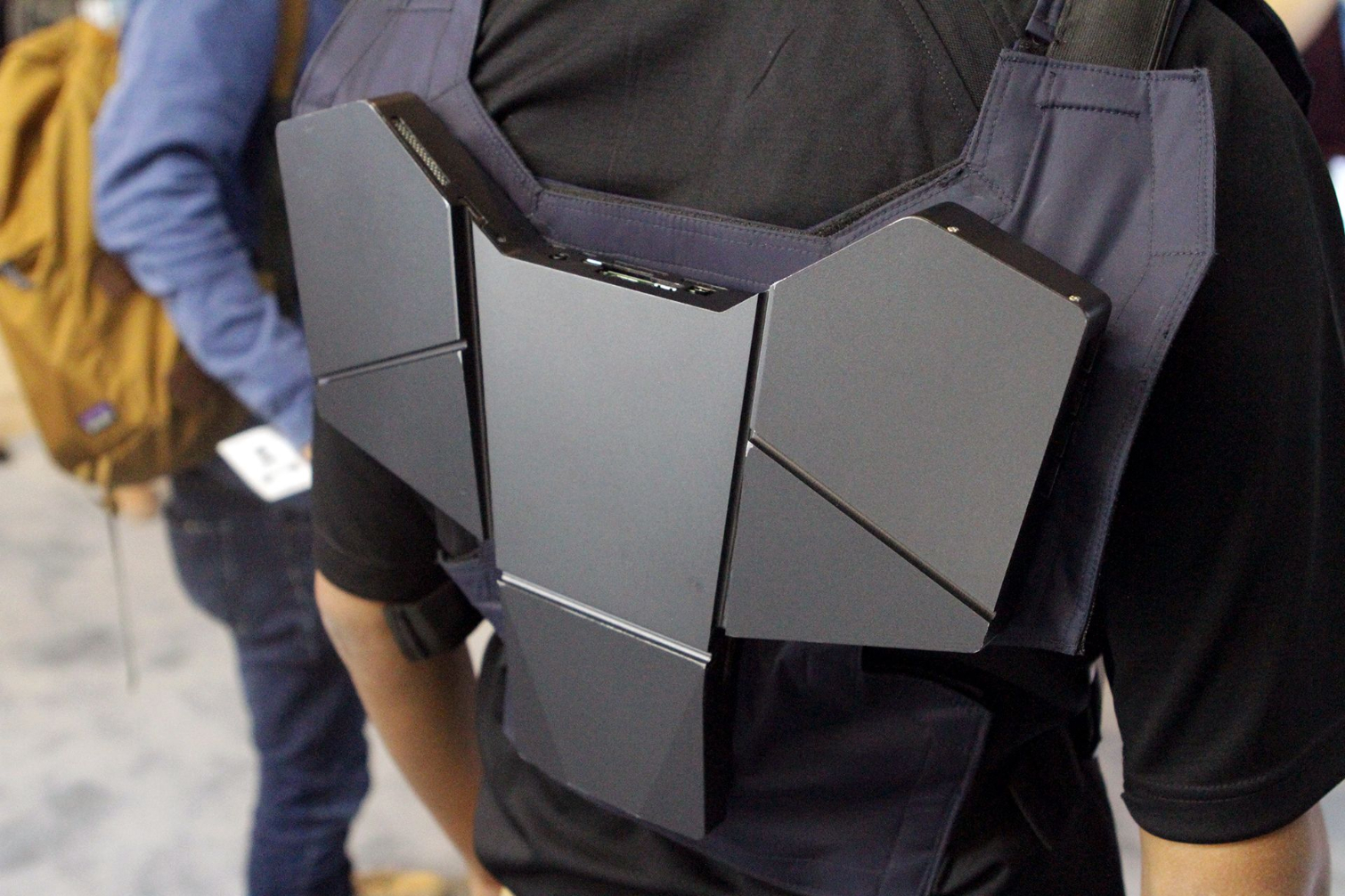
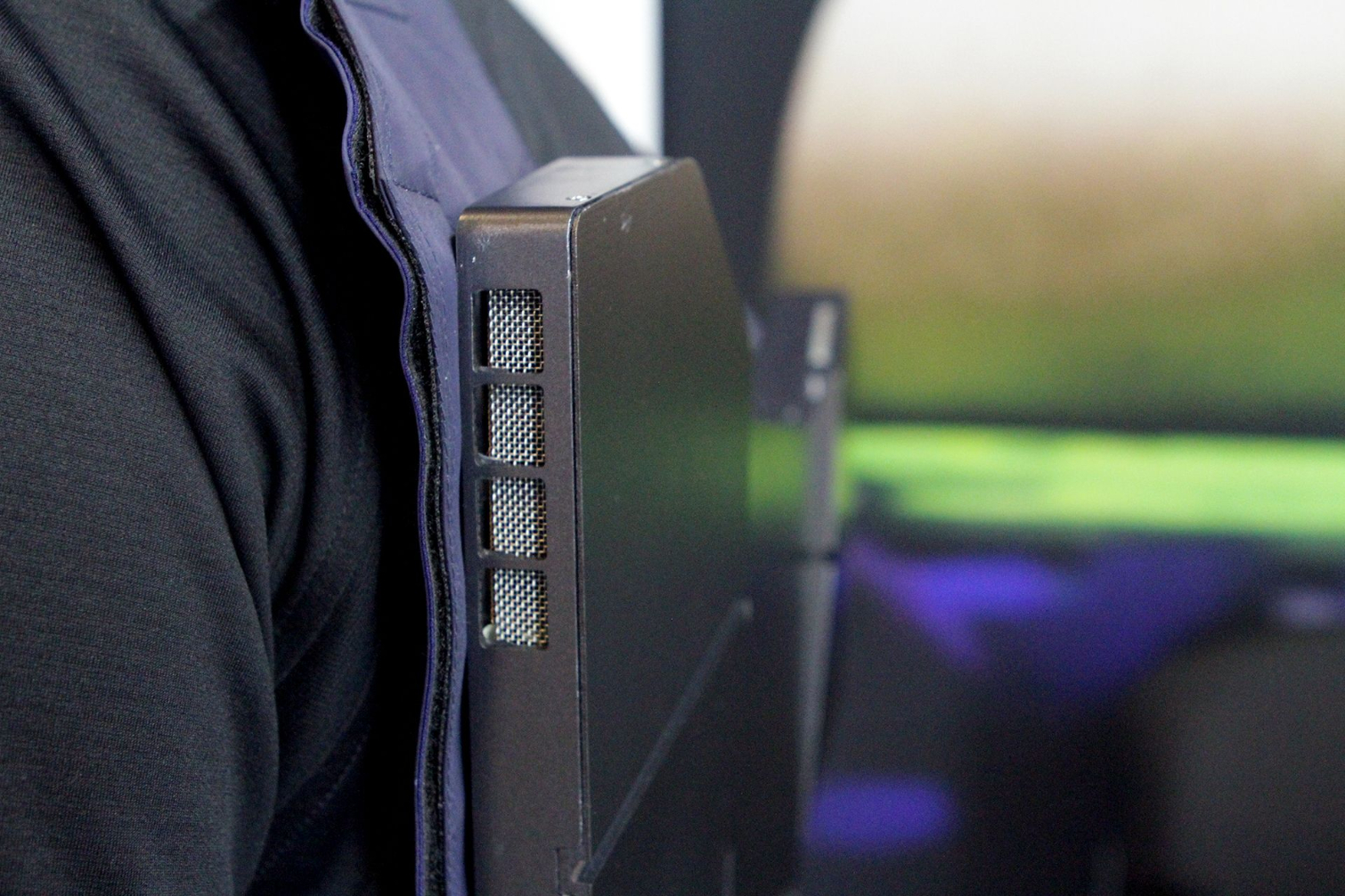

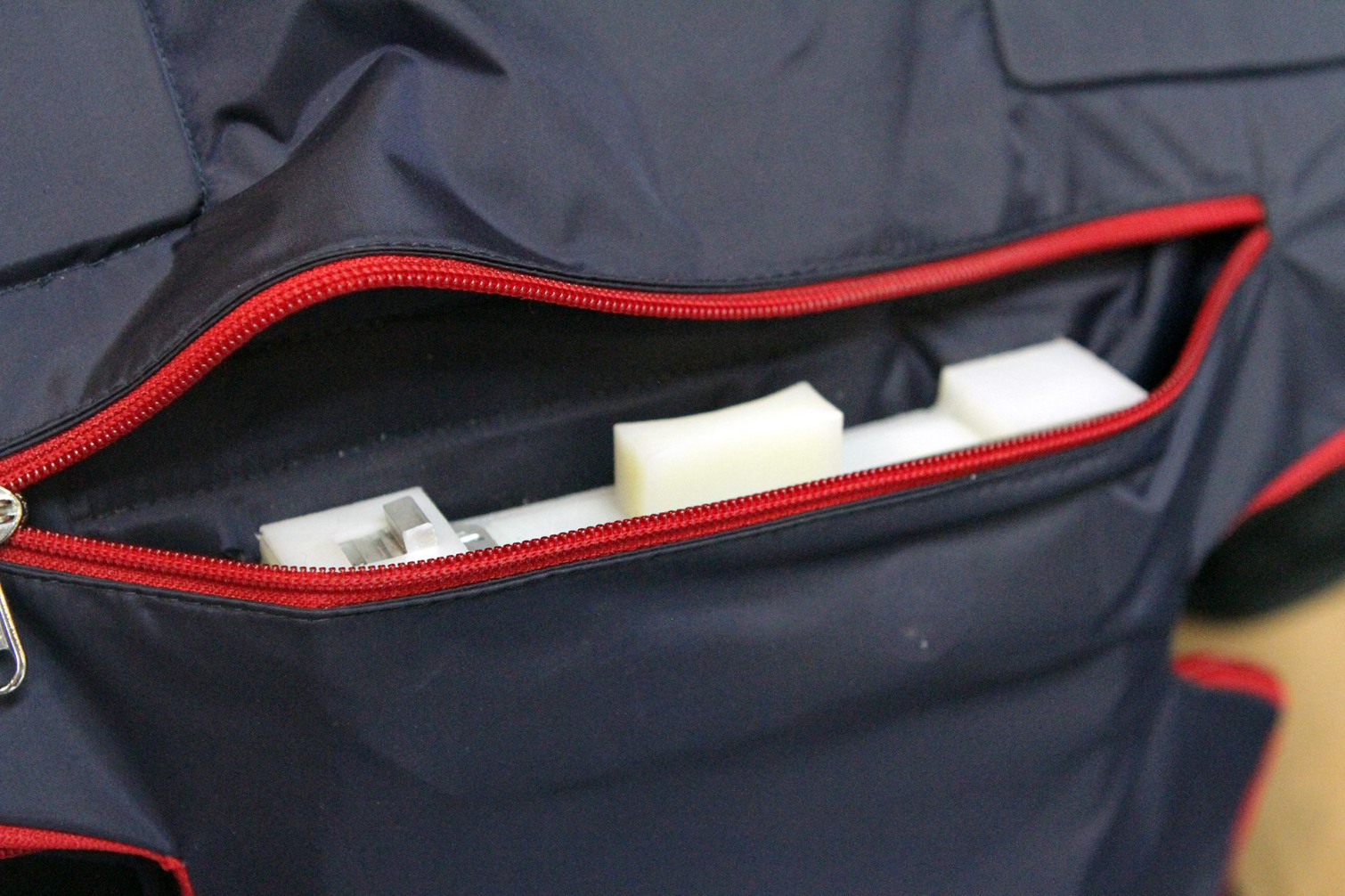
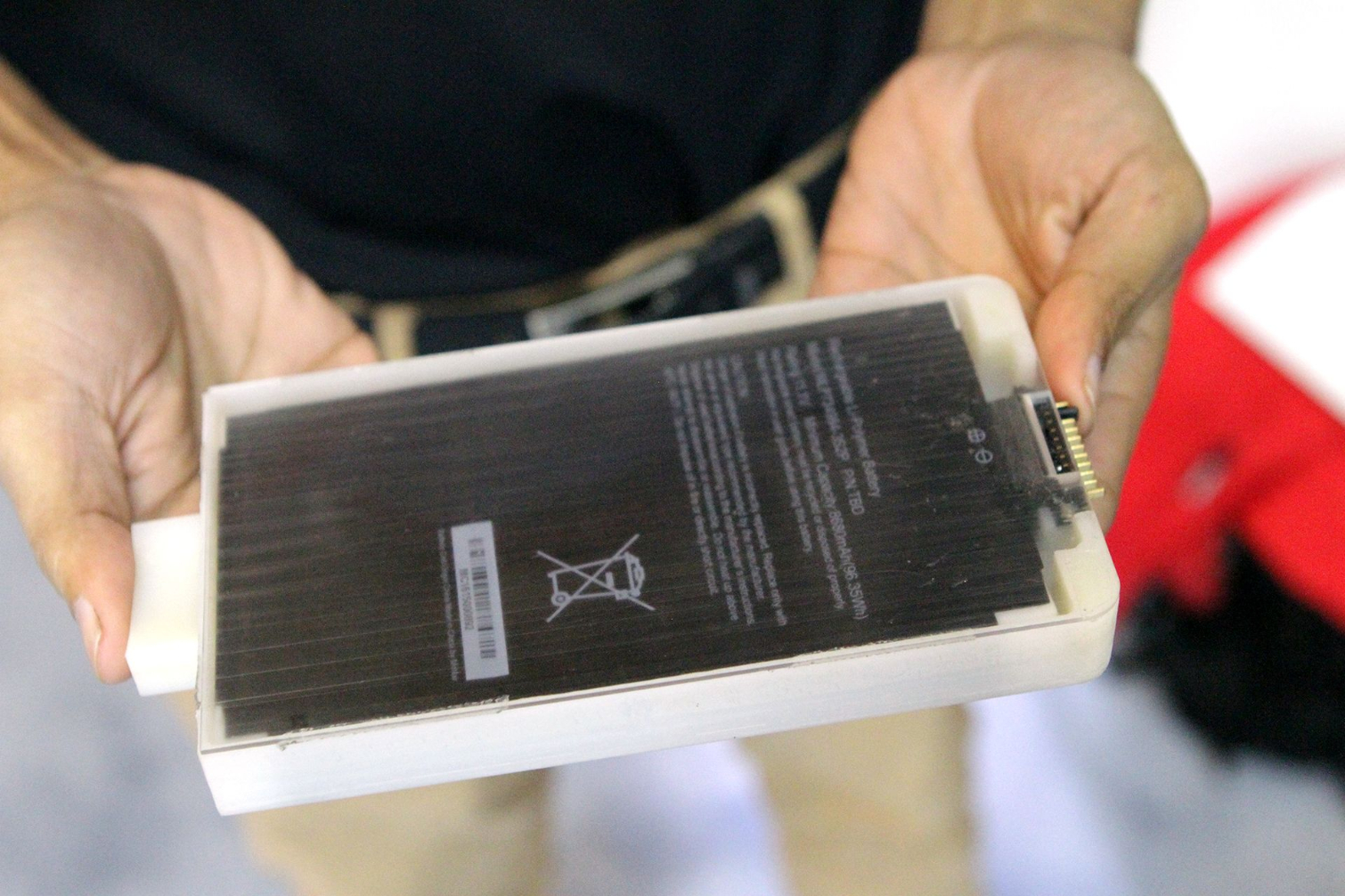
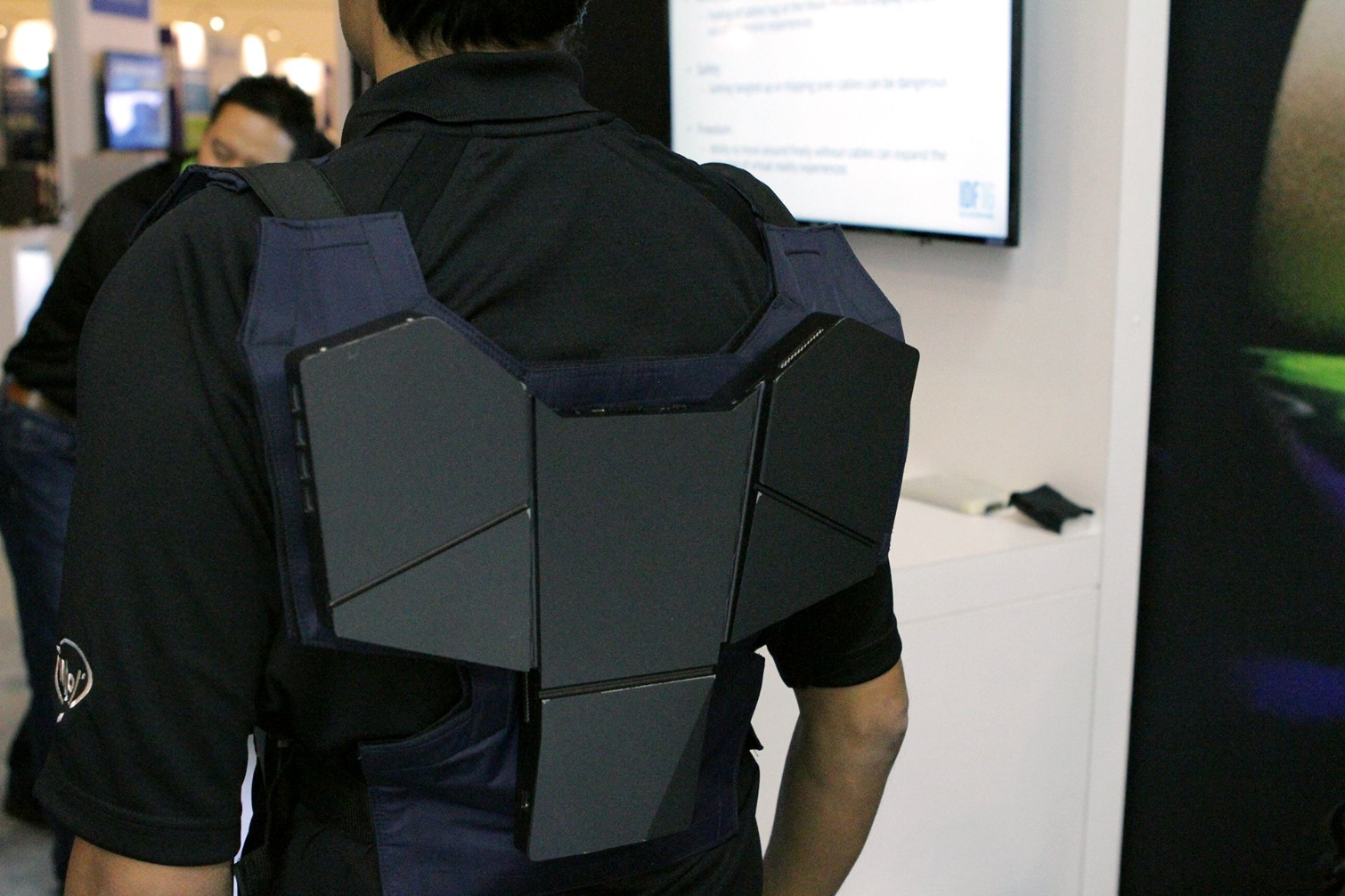
It has a 100 Wh (Li-Ion) battery that comprises the front ballast (the rest of the system is on the back), but the team cleverly added a second 20 Wh battery. Because the smaller battery can power the system for short time, you can hot-swap the larger one.
The above list makes no mention of a GPU, and that’s because the system runs on the CPU’s integrated Iris Pro 580 graphics. Alert readers will note that the Iris Pro 580, robust it may be, does not meet the minimum graphics requirements for VR. The presenters readily acknowledged this fact, but they wanted to show what the iGPU could do with an Oculus Rift DK2 and unsubtly hinted that they were looking into discrete GPU options that would fit neatly into the super-slim PC’s form factor. (How convenient that Nvidia just announced some.)
The VR vest can support both the latest versions of the Rift and HTC Vive.
Roaring Dinosaurs
I had the chance to don the VR vest and enjoy a dinosaur-themed demo. It was a little hard to tell if the less-than-stellar graphics had to do with the weak GPU or the DK2’s quality (it’s been a while since I had a DK2 strapped to my head), but it was probably a combination of the two.
That’s not to say the quality was poor--just that it wasn’t amazing. But anyway, that wasn’t the real point of the demo: I discovered, when a T-Rex roared in my face, that the vest is equipped with haptic feedback. Just as you would be able to feel the mighty roar of a T-Rex in your chest (we assume), the vest vibrated accordingly. I thought I was safe when I walked away from the T-Rex and over to where a triceratops was grazing (those things are vegetarians, right?), but the pointy-headed beast also roared at me, and again, I felt the resultant vibrations in my chest via the vest's haptics.
However, like some other VR haptics I’ve experienced, this one felt gimmicky. It’s just a little vibration, kind of like if you had your phone in your breast pocket and set on vibrate. You would get more or less the same haptic feedback from a dinosaur roar as you would from bumping into another car, firing a shotgun, or any other virtual action that would create a vibration.
There’s nothing mind-blowing about Intel’s VR vest, and it felt a little silly to be wearing a whole PC in vest form. On the other hand, it’s a slightly bulky vest that houses an entire PC that's capable of running basic VR experiences, letting you move about in VR untethered, which is impressive. (We’re going to need that discrete GPU, though.)
What’s most notable is that the team within Intel hacked the vest together in just a few months. With a proper, VR-capable discrete GPU inside, it could be a legitimate-enough product to face off against the incoming glut of VR backpacks.
Update, 8/18/16, 3:21pm PT: Fixed typo on battery rating.
Seth Colaner previously served as News Director at Tom's Hardware. He covered technology news, focusing on keyboards, virtual reality, and wearables.
-
jaber2 Liquid cooling version would plug into your penis. no really I though it would be on a belt not a vest, this however would stop a bullet from behindReply -
targetdrone ReplyIt has a 100 mAh (Li-Ion) battery that comprises the front ballast (the rest of the system is on the back), but the team cleverly added a second 20 mAh battery. Because the smaller battery can power the system for short time, you can hot-swap the larger one.
120 mAH of battery won't power a smart phone for longer than 20 minutes let a lone a full computer. -
edhem I think it is an interesting idea. It would be interesting if they made those computers robust enough to be used for military training games where the whole landscape was designed virtually to improve soldiers' (or us overweight gamers who want to lose weight) reaction times.Reply -
Jeff Fx I'd love to lose the cable to my Vive, but having my skin temperature raised to 95F while running around in VR does not sound pleasant. I keep my VR room at 69F, with multiple fans running to keep room-scale VR from being a sweaty experience.Reply -
bit_user I still think it's too hot. Even if the PC were turned off and I weren't running around in it, I still wouldn't like to wear such a garment in a non-airconditioned space, during the summer.Reply
I imagine you could put smaller battery packs or individual cells in the straps of a backpack, and that also seems more female-compatible.
Also, I wouldn't buy any wearable that's not washable. It shouldn't take more than about 5 minutes to remove everything to prepare for machine washing, and about the same to reinstall the electronics, afterwards.
Finally, I'd hope they put some airspace between the NUC and the wearer, to minimize heat transfer.
-
ar38070 I think that all you would have to do is take the guts out of a gaming laptop with a pascal gpu. You don't need the screen, kb. Should be able to get under 5kg with no problem. Most of the weight would be in the batteries. Heat should not be too bad as you are not as space constrained like in a laptop chassis.Reply -
Vorador2 Smaller and lighter than other manufacturers VR backpacks than are converted gaming laptops. Now when they add the discrete GPU they will have a product on their hands.Reply
Weird choice to use the Rift rather than the Vive since the former requires an IR camera plugged to the computer, while the Vive only needs to have the headset plugged in. -
SockPuppet This might be a good idea with Intel's Project Alloy. But for Rift/Vive these vest/backpack/cummerbund/wtfever ideas are just dumb.Reply
The Rift requires the use of at least one USB connected camera that stays stationary. That right there means this vest won't work with the Rift. The Vive is restricted to a maximum of 15mx15m pre-set square area. So you aren't gaining any "freedom", and you're trading in a cord that weights maybe 4 ounces that you forget about 10 seconds after the game starts for a 5-10 pound PC strapped to your chest that you're sure as hell never going to forget is there. -
scolaner Reply18457823 said:It has a 100 mAh (Li-Ion) battery that comprises the front ballast (the rest of the system is on the back), but the team cleverly added a second 20 mAh battery. Because the smaller battery can power the system for short time, you can hot-swap the larger one.
120 mAH of battery won't power a smart phone for longer than 20 minutes let a lone a full computer.
'Twas a typo. Fixed now.
